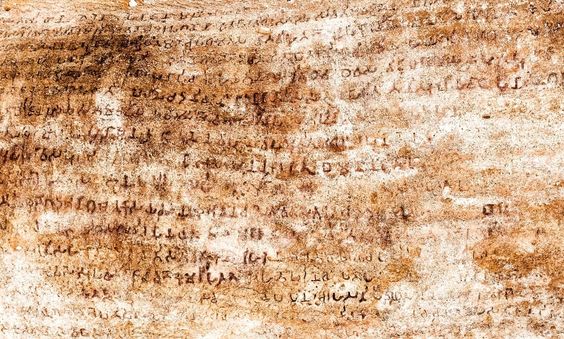Odiya Language | Oriya

Odiya Language also spelled as Oriya, is a primarily spoken language in the Indian states of Orissa, parts of West Bengal, Jharkhand, Chhattisgarh. Oriya is the official language of Orissa and the second official language of Jharkhand.
Odiya is one of the oldest Indian languages in the Indo-Aryan branch of the Indo-European language family. According to linguists, the language was spoken in India more than 2,500 years ago. It was the main language of Buddhism and Jainism.
The original Oriya language is derived directly from Pali and Jhdri Prakrit and is less influenced by Persian and Arabic than any other Indian language. The inscription of the elephant cave shows that the original Oriya language is from the Pali language.
Oriya is one of the 22 official languages and 14 regional languages of India. It is a statutory provincial language in Odisha State, serving as the medium of everyday communication, as well as being used in education, government, business, and in the media.
History of Odiya Language

The Odiya inscriptions at Udayagiri Hatigumpha Caves
Historians have divided the history of the Odia language literature into five main stages: Old Odia (8th century to 1300), Early Middle Odia (1300 to 1500), Middle Odia (1500 to 1700), Late Middle Odia (1700 to 1850), and Modern Odia (1850 to present).
The origin of the Oriya literature can be traced to “Bauddha Gana O Doha“, otherwise known as Charyapada written by the Buddhist Siddhas of Orissa. The Oriya language begins to appear in inscriptions with Oriya scripts in temples, copper plates, palm-leaf manuscripts, etc.(7th century).
The earliest use of prose can be found in the Madala Panji or the Palm-leaf Chronicles of the Jagannatha temple at Puri, which date back to the 12th century. Several Kaalpanika (imaginative) and Pauraanika (Puranic) Kavyas, many Chautishas (a form of Odia poetry) The famous ones being Milana Chautisha, Mandakini Chautisha, Barshabharana Chautisha, Rasakulya Chautisha were composed during this time. (17th century).
Suggested Read: Culture and Tradition of Odisha
The use of Oriya words can be seen in the 7th-century palm leaves. Buddhist and Doha texts from Nepal, such as Yogindra Dandadhua (Doha) and body language hymns, are written in ancient Oriya. Written by the Buddhist Acharya, this charyasahitya is the destination of the ancient Oriya words.
‘Dev Kahi Bhakti Karun Bolanti Vho Kumar Sheen’ in an 8th-century inscription of Maharajas from Bhadrak is a self-contained Oriya word written in Oriya. The Madalapanji used in the temple of Puri Sreejagnath has been written in prose since the eleventh century AD. That language has gradually changed to the modern Oriya language. The use of the Oriya word potter can be seen written in copperplate. Similarly, in the 61st century and in the 415th century, fifteen of the Oriya words are used.
There are three major Oriya language movements in history. Through these three movements, Oriya was protected and managed to connect the land with the language. The first, in 1083, the Gangabanshi king Cholgang Deb declared himself the guardian of all and recognized the Oriya language as the official language along with Tamil and Sanskrit. The second language movement took place in 1936. At this time, Kapilendra Deva declared himself the ruler of Jagannath and became the ruler of Odisha, and for the first time accepted only Oriya as the language of governance. As a result, hundreds of thousands of people were educated as the first state in India to write literature in Oriya. The third language movement took place during the British rule during the 17th famine.

It first began during the 18 British rule, and in 1903 formed a large movement that resulted in the formation of Odisha as the first Indian state in 1936 on the basis of language. The first Odia newspaper was Utkala Deepika first published on 4 August 1866 and is today celebrated as Odia Journalism Day.
The Orissa Legislative Assembly passed a law on the official use of the Oriya language in 1954. However, due to a lack of effort and the difficulty of typing Oriya in Oriya typewriters, it has not been implemented.
On February 20, 2018, the central government recognized the Oriya language as a classical language, and on March 11, a notification was issued in the official gazette. Oriya became the sixth language after Tamil, Sanskrit, Telugu, Kannada, and Malayalam to gain classical status.
Suggested Read: Utkal Diwas
Odiya Language Dialects
Major forms of Odiya dialects are
• Halbi
• Midnapore Oriya
• Mughalbandi (Standard Oriya)
• North Balasore Oriya
• Northwestern Oriya
• Southern Oriya
• Western Oriya
There are four dialects in the state of Orissa: Standard Oriya, prevalent in the capital Bhubaneshwar and in the districts of Cuttak and Puri, and Western, Northern, and Southern dialects, prevalent in the western, northern, and southern regions of the state, respectively. The last three are influenced by the languages spoken in neighboring states (Hindi in the west, Bengali in the north, and Telugu in the south). Two Oriya stylistic forms can be distinguished: formal and informal, the former using more Sanskrit loanwords and restricted mainly to writings.
Suggested Read: Interesting Mysteries Of Puri Jagannath Temple
Odiya Writing
Oriya contains 64 letters (consonants and vowels). Below you will find the letters, the pronunciation, and sound.

Oriya has a strong literary heritage dating back to the 13th century. Oriya script is an abugida written from left to right. An abugida is a type of writing system in which each character represents a consonant followed by a specific vowel. Other vowels are represented by a modification of the consonant symbol. Oriya script developed from the Brahmi script. It is thought that the rounded shapes of the Oriya characters resulted from writing on palm fronds with a sharp stylus. Straight lines and sharp angles would have torn the fronds.
A remarkable specialty in the Oriya letter is the typical style of the curve which is present instead of the horizontal top line of Devanagari in almost all the letters, except the central part of the letter which is reduced in size and difficult to recognize at first glance. Therefore to a learner of the script, the majority of the letters may appear almost identical in the beginning. Oriya allows compounding, but unlike Sanskrit, it does not allow elision. The use of compounds is more a feature of written than of spoken Oriya. Oriya has 6 pure vowels, 9 diphthongs, 28 consonants (3 of them retroflex), 4 semivowels, and no consonant-ending words. The written form uses three diacritics: visarga, anusvara, and candrabindu.
Oriya grammar distinguishes between singular and plural number; first, second, and third person; and masculine and feminine gender, although the gender of the noun has no morphological consequences for the pronoun and the verb. It is an inflectionally rich language. Nominals carry number and case inflections, while adjectives carry inflections indicating the degree and, for the tatsama adjectives, gender.
Oriya is a subject-object-verb (SOV) language with a three-tier tense system. The finite verb agrees with its subject in person and number and also marks the honorific form. The main moods are indicative, imperative, interrogative, and subjunctive. The copula does not surface if the sentence is in the present tense. It is possible for main clauses-and some subordinate clauses-to be without a subject.
Suggested Read: Rath Yatra Puri
Here are some common phrases and words in Oriya.
• Hello – Namaskar
• Goodbye – Bidaay namaskar
• Thank you – Dhanyabada
• Please -Dayakari
• Yes – han
• No – na






